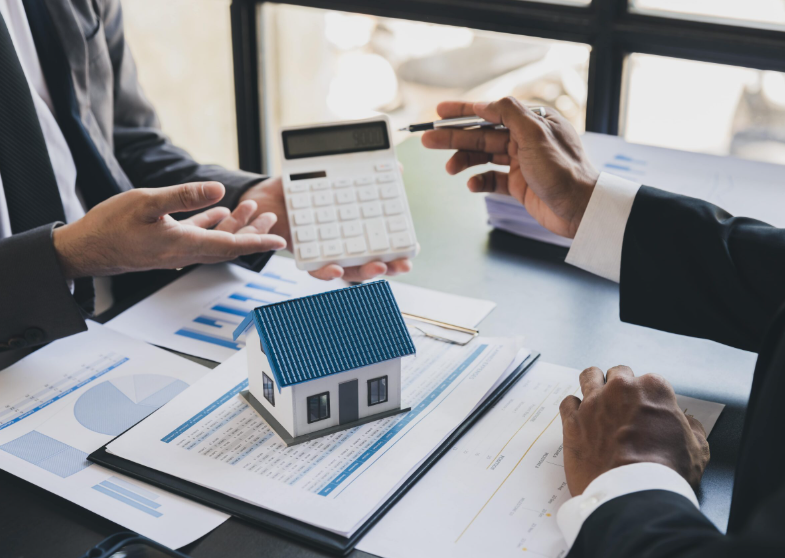For many first-time homebuyers, a 30-year mortgage seems like the most practical option. After all, it offers lower monthly payments and the ability to buy a bigger house. But here’s the catch—those low payments often come with a hefty price tag in the form of interest, and this seemingly simple mortgage can quickly become a financial trap. Here’s why a 30-year mortgage may not be as great as it seems, and what you can do to escape it.
Why the 30-Year Mortgage is a Financial Trap
A 30-year mortgage is one of the most common home loan options, but it’s also one of the sneakiest traps you can fall into. The problem is that it encourages homebuyers to borrow more money than they need, stretch their budgets, and end up paying far more in interest than necessary. Plus, unless you plan on staying in your home for a long time, it can be tough to build significant equity in your property.
I’ve been there. When my wife and I bought our first house, we opted for a 30-year fixed-rate mortgage because it allowed us to afford a nice home in a decent neighborhood. It seemed like a no-brainer at the time. But we didn’t fully understand the consequences of taking on such a long-term debt.
Most first-time buyers, especially younger ones, don’t purchase their “forever home.” According to a 2013 study from the National Association of Home Builders, first-time homebuyers typically stay in their homes for about 13 years. So, the question is—does a 30-year mortgage make sense if you’re planning to move within a decade or so?
How the 30-Year Mortgage Costs You
To understand why a 30-year mortgage can be so costly, let’s take a quick look at how mortgage interest works. With most mortgages, interest is front-loaded, meaning you pay much more in interest during the early years of the loan.
For example, let’s say you take out a $150,000 loan at a 4.5% interest rate. Your monthly payments might be around $760, not including taxes and insurance. However, for the first year, about $560 of that payment goes toward interest. In the last year of the mortgage, less than $35 will be applied to interest. This means that for the first several years, you’re essentially renting the house from the bank. Unless you stay in the home for a very long time, you’re unlikely to build meaningful equity during this period.
On top of that, unlike renting, you’re responsible for home repairs and upgrades, making it harder to build wealth.
The Real Cost of a 30-Year Mortgage
Let’s break down the numbers a bit more to see the long-term effects of a 30-year mortgage versus a 15-year mortgage. When we bought our current home, we had the choice between a 15-year and a 30-year fixed mortgage. Here’s how the numbers worked out:
- 15-Year Fixed at 2.75% interest: We would pay a total of $33,225 in interest over the life of the loan.
- 30-Year Fixed at 3.75% interest: We would pay $100,082 in interest over 30 years.
That’s a difference of almost $70,000—real money saved just by choosing a shorter loan term.
Moreover, after 10 years of payments, we would have $93,000 in equity with the 15-year mortgage, compared to only $32,830 in equity with the 30-year mortgage. The 15-year loan is a more aggressive option, but the payoff in terms of equity and interest savings is substantial.
Why You Should Avoid a 30-Year Mortgage
Here are a few more reasons to steer clear of a 30-year mortgage:
- Longer Loan Term: Who wants to be paying off their home into their 50s, 60s, or even 70s? A 30-year mortgage means decades of debt hanging over your head.
- Higher Interest Rates: With longer loan terms, lenders tend to charge higher interest rates, meaning you pay more over time.
- Massive Interest Payments: The longer you stretch out your mortgage, the more interest you’ll pay. Opting for a 15-year mortgage can help you save tens of thousands of dollars in interest over the life of your loan.
How to Escape the 30-Year Mortgage Trap
If you’re already locked into a 30-year mortgage, there are still ways to break free and save money. Here are a few strategies:
- Pay It Off Faster: If you have extra funds available, make extra payments on your mortgage. By paying more than the minimum, you can reduce the term of your loan and cut down on interest. For example, if you save $322 per month by choosing a 30-year mortgage, you can use that savings to make extra payments toward the principal, effectively shortening the term to around 16 years. While you won’t save as much as you would with a 15-year mortgage, you can still cut around $49,000 in interest payments.
- Refinance to a 15-Year Mortgage: If you’re in a position to refinance, switching to a 15-year mortgage can save you a significant amount of money. We’ve done this with some of our properties, and it has saved us tens of thousands of dollars in interest payments.
- Pay it Off in Cash: This may not be realistic for most people, but if you come into a windfall or have enough savings, paying off your mortgage in cash is the ultimate way to escape the debt trap once and for all.
Wrapping Up
If you want to build real wealth, getting rid of long-term debt like a 30-year mortgage is a key step. By avoiding this financial trap and considering alternatives like a 15-year mortgage or extra payments, you can save money and build equity much faster. The quicker you pay off your home, the sooner you can invest that money elsewhere, building a stronger financial future for yourself.

发表回复